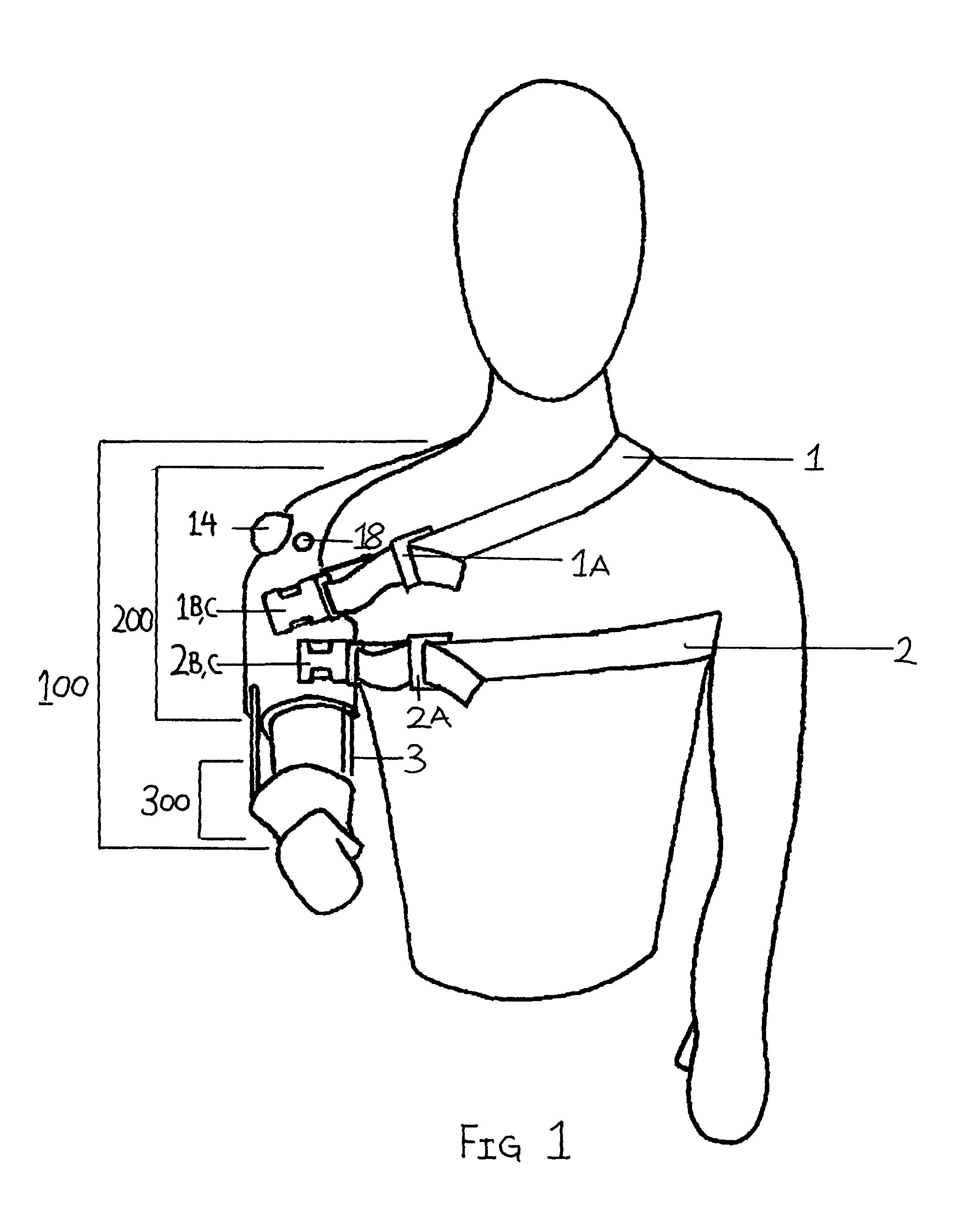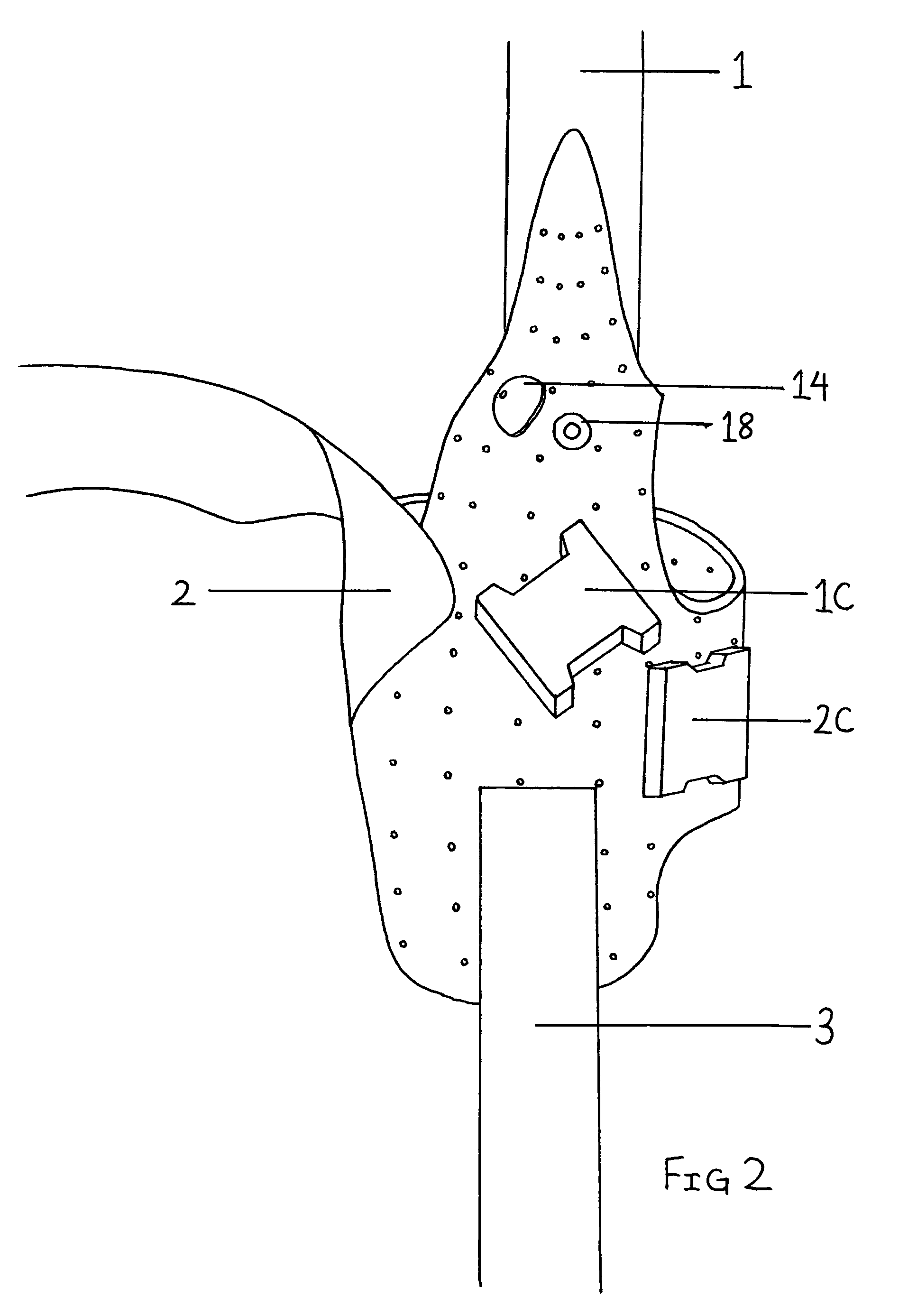Device to treat and/or prevent shoulder subluxation
a technology for shoulder subluxation and shoulder subluxation, which is applied in the field of shoulder subluxation prevention and treatment devices, can solve the problems of patient voluntary movement, lack of muscle tone, and inability to move, so as to improve the ease of independent use, reduce the subluxation, and add to the comfort of the wearer
- Summary
- Abstract
- Description
- Claims
- Application Information
AI Technical Summary
Benefits of technology
Problems solved by technology
Method used
Image
Examples
Embodiment Construction
[0067]With reference to FIG. 1, shoulder sling device 100 is shown as worn by a user in accordance with the present invention. Device 100 consists of shoulder sling portion 200 from which emerges a plurality of straps, namely strap 1, strap 2 and strap 3. Referring to FIGS. 1-3, strap 1 is shown to emerge from the most superior portion of shoulder sling portion 200, extend across the patient's dorsum, return anteriorly by crossing the patient over the left trapezius muscle, pass through length adjusting mechanism 1A and loop into in attachment element 1B to return into the length adjusting mechanism. Attachment element 1B will be inserted into attachment retaining element 1C located on the anterior area of the device 100. The length of strap 1 may be adjusted via length adjusting mechanism 1A by pulling on strap 1. Similarly, strap 2 begins from a more posteriolateral location on the device, crosses the patients back, emerges anterior after crossing the patient's left axillary regio...
PUM
 Login to View More
Login to View More Abstract
Description
Claims
Application Information
 Login to View More
Login to View More - R&D
- Intellectual Property
- Life Sciences
- Materials
- Tech Scout
- Unparalleled Data Quality
- Higher Quality Content
- 60% Fewer Hallucinations
Browse by: Latest US Patents, China's latest patents, Technical Efficacy Thesaurus, Application Domain, Technology Topic, Popular Technical Reports.
© 2025 PatSnap. All rights reserved.Legal|Privacy policy|Modern Slavery Act Transparency Statement|Sitemap|About US| Contact US: help@patsnap.com



